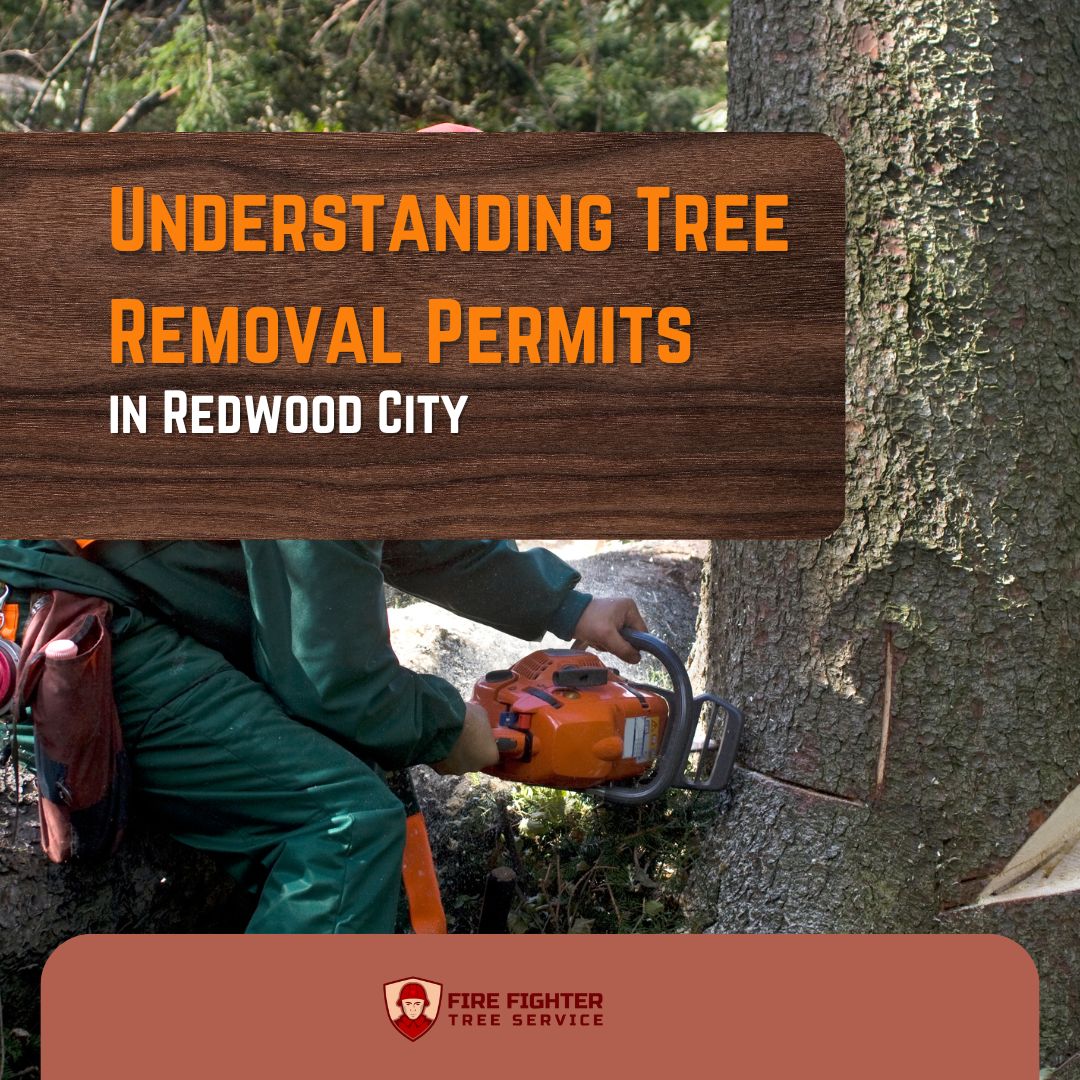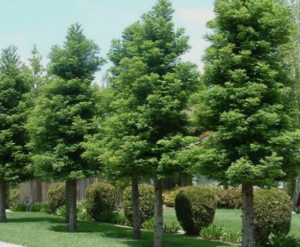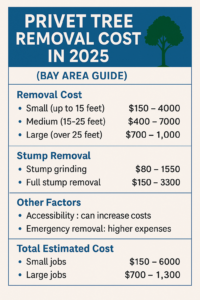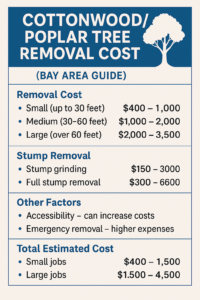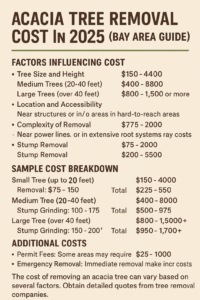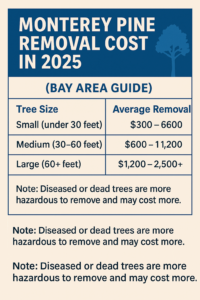Did you know you cannot prune or remove a tree in Redwood City without a permit? Redwood City values its ecosystems and prioritizes maintaining ecological balance. Local regulations require consulting the authorities when handling trees, even on private property. This prerequisite enhances safety practices and the conservation and preservation of green spaces.
You require a permit to cut or prune a city or privately owned tree. The regulations enhance the health and longevity of green spaces. Here is an in-depth explainer of obtaining a tree removal permit, including requirements, duration, penalties, and rejection.
Table of Contents
- Why Tree Removal Permits Are Necessary in Redwood City
- Importance of Tree Permits
- Steps to Obtain a Tree Removal Permit in Redwood City
- Insights: Common Challenges and Tips for Success
- FAQs
Why Tree Removal Permits Are Necessary in Redwood City
A Redwood City tree removal permitis essential for planning, building, and construction. Redwood City tree removal regulations recognize public and private trees. Public trees are in public spaces, including sidewalks and curbs. Private trees are on private property. Each of these trees contributes to the city’s environment.
Importance of Tree Permits

1. Preserving the City’s Canopy
The tree preservation regulationscall for conserving the city’s canopy. Local authorities control the number and type of removable trees through permits. The parks and recreation director prioritizes the preservation of mature trees, native species, and trees with historical and cultural significance. The permit requires locals to develop mitigation strategies to replace lost canopy.
2. Ensuring Public Safety
The parks and recreation director gives the tree removal permit under certain conditions and requirements. For instance, only a certified arborist can remove the tree. The regulations require traffic control around the area to prevent accidents and injuries. Tree removers should protect utility lines around the target tree. The parks and recreation director or representatives inspect and approve the tree removal technique before handing out the permit.
3. Environmental Sustainability
Redwood City trees filter the air by absorbing pollutant gases and capturing particulate matter like dust and smoke. Trees utilize carbon dioxide and release oxygen in the city’s atmosphere, reducing greenhouse gas emissions. They also provide shade and beautify the urban landscape.
4. Urban Forestry Conservation
Redwood City prioritizes green spaces. Trees are a key aspect of the city’s environment. Permits preserve tree canopy coverage by regulating tree removal and ensuring the maintenance of healthy trees.
Steps to Obtain a Tree Removal Permit in Redwood City

1. Determine if a Permit is Required
Redwood City has tree removal permit criteria.The criteria prevent unmanaged canopy reduction, native species extinction, ecosystem imbalance, and hazardous tree removal practices. Tree removers comply with Redwood City tree guidelines to avoid fines and lawsuits.
Size Criteria
The city requires locals to obtain a removal permit for trees with a diameter larger than 12 inches. The inspectors measure the diameter at the thickest point between 6 and 36 feet above the ground.
Species Criteria
Redwood City does not have a list of protected tree species that require a permit for removal. Nevertheless, the city’s regulation requires arborists to obtain a permit for heritage tree removal. Heritage trees are healthy trees well adapted to the area’s climate. The trees have historical significance, are indigenous to the area, or are codependent with adjacent trees for survival.
Tree Location
Arborists require a removal permit to remove trees in public and private spaces. The parks and recreation director considers whether the tree is in an area hindering construction or reasonable economic advantages. The specialist also factors in the number of trees in the region, the effect of soil erosion and retention, and surface water flow and diversion.
Emergency Tree Removal
Redwood City requires arborists to obtain emergency tree removal permits for trees in certain conditions. You need a permit for structurally compromised, pest-infested, or diseased trees. The same applies to trees near existing or proposed structures or interfering with utility lines.
2. Consult with a Certified Arborist
The tree removal process begins with a tree assessment process. The parks and recreation director requires an arborist to report for tree removalto make an informed decision on permit approval. Only licensed arborists in Redwood City can assess the tree and provide a report for the parks and recreation director to evaluate. The arborist’s report shows the tree’s health, condition, and structural integrity. The report provides insights on the risks and justification for removal.
How to Find a Licensed Arborist in Redwood City
Redwood City has numerous arborists. However, not all are certified or capable of handling every tree removal process. Due diligence is vital to choosing a qualified arborist.
Verify the Arborist’s Credentials and Certification
Confirm if the arborist is a member and has been certified by the International Society of Arboriculture (ISA). The ISA certification signifies an arborist tree has met rigorous standards of knowledge and experience in tree care. Additional qualifications include Tree Risk Assessment Qualification (TRAQ) certification, which shows expertise in hazardous trees.
License and Insurance
Ensure the tree care specialist is licensed to handle trees in Redwood City. The company should also be insured to safeguard against risks associated with tree removal on property, third parties, and workers.
Local Knowledge
Evaluate the arborist’s knowledge of local tree species, diseases, pest infestation, and structural problems. Verify their familiarity and compliance with Redwood’s tree care and maintenance codes.
Scope of Service
Ensure the arborist specializes in all tree care services, from risk assessment to pest and disease management and tree removal.
Leverage Testimonials and Reviews
Look for testimonials or recommendations from your social circle or the Redwood City community. You can also check trusted online review sites like Google Review, Angie’s List, or Yelp to gauge what other clients say about your arborist of choice.
3. Submit the Permit Application
The tree removal application processbegins with a professional assessment from a certified arborist. The tree care specialist analyzes the tree’s condition and location. The arborist then recommends the best course of action.
Maintain clear communication with the city officials to facilitate an easy permit approval process. Keep records of the entire process and submit all relevant documentation.
The Application Process
Tree Assessment
A certified tree care specialist assesses the tree for disease, pest infestation, structural compromise, or the safety of neighboring or upcoming structures and utility lines. The evaluation includes the tree’s effect on adjacent greenery, soil, and topography. It details the associated risks of the removal process.
Report Compilation
The arborist provides tree removal documentation detailing assessment findings. The report contains the tree species, location, and size. It details the tree’s health assessment findings, structural integrity, risk assessment, and recommended removal strategies. The report includes visual documentation such as photos and diagrams.
A Completed Form
Request and complete the tree removal form from the municipal office after receiving the arborist’s report.
Permit Request Submission
Submit the tree permit to the Redwood City municipal offices along with all the documentation detailing the application process.
4. Understand Replacement Requirements

Redwood City is proactive in urban forest preservation. The city maintains its tree canopy through post-removal restoration policies stipulated in the Tree Preservation Ordinance. Tree replacement is a vital policy after the removal of city-owned trees. Replanting in public spaces requires the supervision of the park superintendent. The official determines the tree species for planting, location, and placement in public streets.
Replacement tree requirements apply to city-owned tree removal on private properties. The replanting guidelines in Redwood Cityhave a long-term impact on reforestation and environmental sustainability. The policies preserve the city’s green spaces, boost tree health, maintain quality air, prevent soil erosion, and slow down surface water runoff.
5. Follow Up with City Officials
Remain proactive on Redwood City permit follow-up. Many people contact public works for permits. The tree removal approval timeline varies on a case-by-case basis. City officials grant approval depending on case urgency, department workload, application completeness, and reason for removal. Your application progress is as good as your persistence in getting it approved.
Tips for Reaching Out to City Officials
- Contact the department responsible for tree removal to inquire about the permit progress at regular intervals
- Remain professional in your inquiry
- Ensure you have all your permit details for quick reference
- Visit the city’s physical office to avoid online bureaucracy
Unique Insights: Common Challenges and Tips for Success
Navigating city tree permits is not for the faint-hearted. The process is easily among the top tree removal challenges in Redwood City. Here are typical drawbacks of the process and tips for tree removal success to help you through the interim.

1. Approval Delays
Permit approvals have no specific timelines. As a rule of thumb, you can wait up to three months upon application. City officials give permits depending on the reason for approval, permit application backlog, nature and type of tree, and emergencies. Nevertheless, contacting city officials or visiting the offices for updates can expedite the process.
2. Unclear Communication
The department responsible for your tree removal permit may vary depending on tree species, location, and urgency. The parks and recreation director oversees the referral process for tree permit applications. On the other hand, the city official can forward applications to other city departments, boards, commissions, committees, or the City Council.
Keep in touch with the city officials to follow through the process for a quick turnaround. Direct your inquiries to the relevant department to avoid confusion and time wasting.
3. Application Inconsistencies
Submitting an inconclusive or erroneous permit application will cost you more time. You can avoid errors and omissions by working with a certified tree care company in Redwood City. Leverage the company’s extensive local knowledge, permit application expertise, and experience. Ensure the company provides all-inclusive tree care services, from tree planting to maintenance, disease and pest control, and tree removal.
FAQs
How long does the tree removal permit process take in Redwood City?
Permit approval in Redwood City is a complex process with unclear timelines. The regulations stipulate a 3-month wait period. However, the stipulated tree permit timeline may vary depending on application influx, the reason for the permit request, and your application completeness. You can expedite the process by contacting city officials to inquire about the permit status.
What if my tree poses an immediate safety risk?
City officials prioritize emergency tree removal permitsbecause of the urgency and risks involved. Safety risks for tree removal increase due to structural compromise, diseases, and pest infestation. However, delays in an emergency permit approval can still occur. One way to expedite the process is by calling or visiting the department responsible for the permit.
Can a tree company handle the permit for me?
Companies offering full-service tree removalprovide tree services with permits. The tree care specialists handle all the permit requirements, leveraging their knowledge and familiarity with the permit-issuing departments to expedite the process. Full-service arborists also perform risk assessments, generate comprehensive reports, and analyze the tree’s health and structural integrity.
